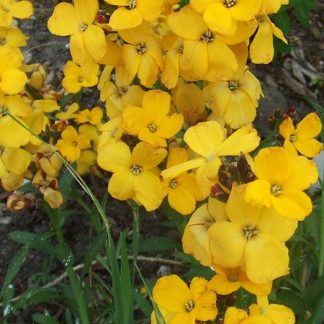Description
Boraginaceae
Forage for Pollinators: Produces Nectar, and in large quantities, for Honeybees (the flower-tube is about 7mm long and within reach), and is secreted by the enlarged base of the flower head. It is also particularly attractive to both short and long-tongued Bumblebees and some Solitary bees.
Flowering time: April, May, June, July, August, September.
Growing information: BIENNIAL, which grows to 0.8m (2ft6”) and is hardy to minus 25ºC. Recorded growing wild here in the 1800’s it originated in the Steppes of South-East Europe, and able to stand extremely acid and also chalky, alkaline soils; preferring dry, sandy soils. Research points to the concentration of sugars in nectar of Anchusa officinalis (61%) as being considerably higher than another member of this family also popular with bees (Symphytum officinale). Similar, though much hardier, than its annual cousin Borage. This is an ideal subject to allow to self-seed in your wild garden (each plant producing many hundreds of seeds), or apiary, though can be welcome in more formal settings, and easily managed. Not to be confused with its cousin Pentaglottis sempervirens (Green Alkanet) which is a well-known weed, and has perhaps also given Anchusa officinalis a ‘weed’ label by some. Like any wildflower it can flourish on the right soil type.






